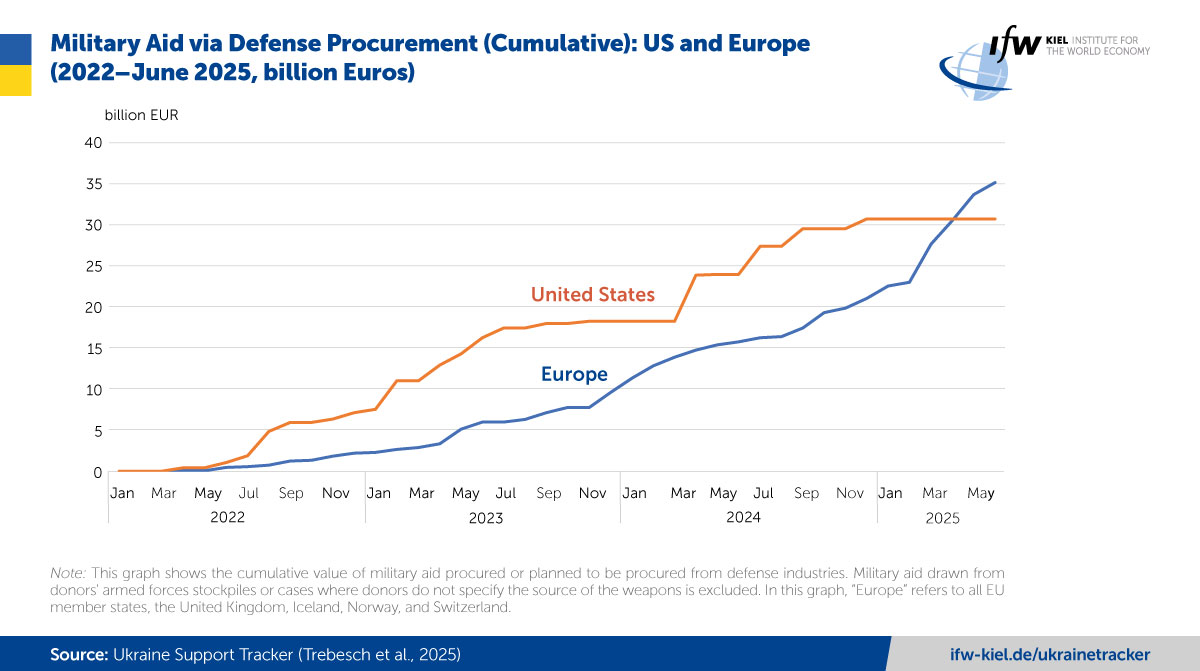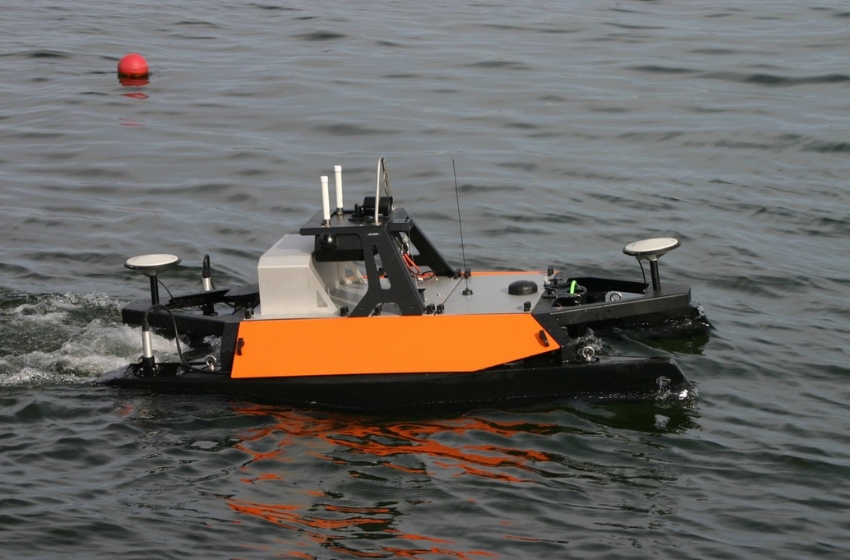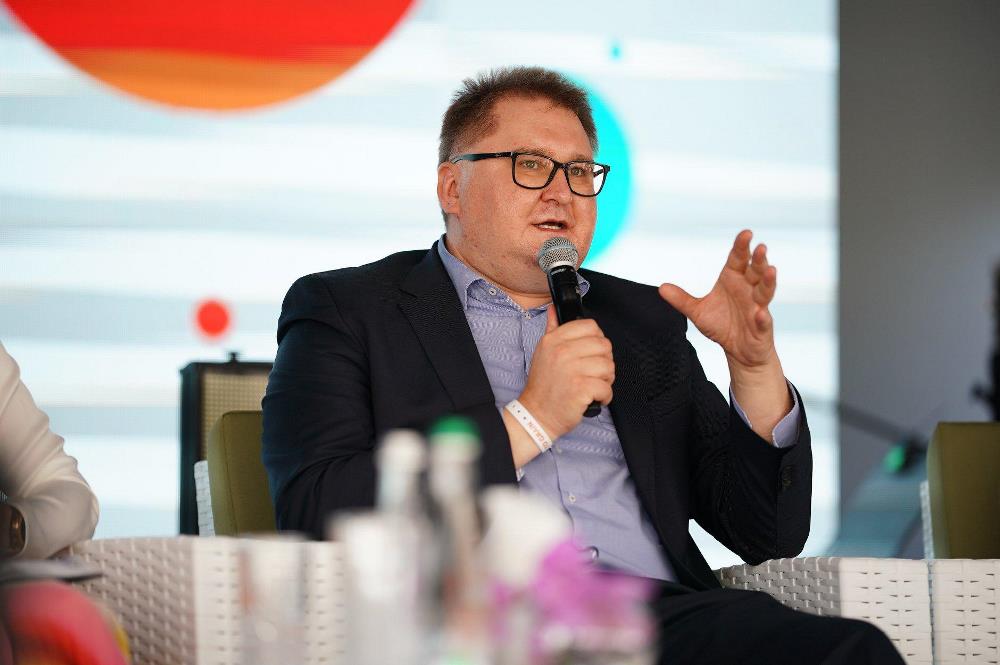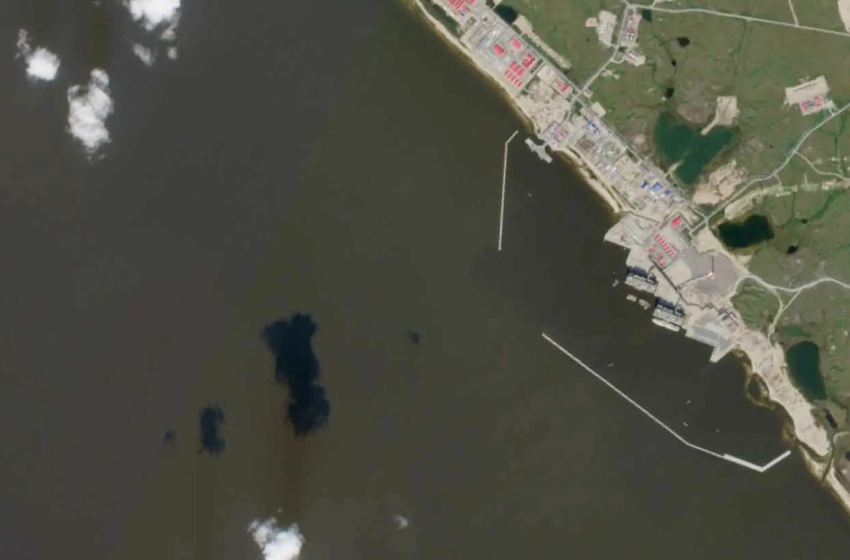Europe has taken on the role of leader in directing funds toward weapons production for Ukraine.
This is evidenced by research from the Kiel Institute for the World Economy’s Ukraine Support Tracker.
According to the study, since the start of the full-scale war until June 2025, Europe has allocated at least €35.1 billion in military aid through defense procurement—€4.4 billion more than the United States. A significant portion of the provided weapons is no longer coming from existing stockpiles but is being purchased directly from the defense industry.
“Military aid to Ukraine is increasingly determined by the capacity of the defense industry,” says Taro Nishikawa, project lead of the Ukraine Support Tracker. “Europe has now procured more through new defense contracts than the United States—marking a clear shift away from drawing on arsenals toward industrial production. To ensure timely and effective delivery of the promised aid, Europe therefore needs a strong and resilient defense industry.”
It is noted that in May, for the first time since the beginning of Donald Trump’s administration, the United States approved a substantial volume of arms exports to Ukraine, but Kyiv has to finance these purchases itself.
Meanwhile, Germany allocated a military aid package worth €5 billion, the largest bilateral assistance according to the study. It is followed by Norway, Germany (FRG) with €1.5 billion, and Belgium with a contribution of €1.2 billion. The Netherlands, the United Kingdom, and Denmark each allocated between €500–600 million.

According to experts, Europe is purchasing more military aid through industrial contracts than the United States. Of the €10.5 billion in European military aid allocated in May and June 2025, at least €4.6 billion is planned to be directed through procurement contracts with defense companies rather than drawn from existing stockpiles. These contracts have mostly been signed with firms based in Europe and Ukraine, indicating the growing role of defense manufacturing in military assistance, researchers note.
Financial support for Ukraine now largely depends on the ERA loan mechanism. This initiative, launched by the G7 and the European Commission, provides Ukraine with a total of €45 billion in loans financed by revenues from frozen Russian assets. In May and June, the EU allocated €2 billion, Canada contributed €1.5 billion, and Japan provided about €2.8 billion.
At the same time, Nishikawa points out that the aid promised in October 2024 is being disbursed gradually, available funds are decreasing, and whether donors can maintain this level of support in the long term remains uncertain.
The Ukraine Support Tracker project monitors military, financial, and humanitarian aid to Ukraine based on open data. The study covers 40 countries, including EU member states, G7, as well as Australia, South Korea, Turkey, Norway, New Zealand, Switzerland, China, Taiwan, and India. EU institutions are included as a separate donor.





















